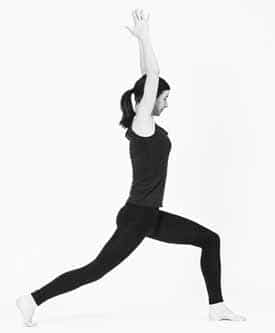By Ulrike Brandner-Lauter, SOYA500, from Vienna, Austria
Students and teachers alike enjoy attending a yoga class led by a mindful and skillful teacher and for many it is the most delicious feeling of being guided and inspired. But many students are seeking guidance for the development of a solid home practice as the base for further development and as a steady point in life while traveling or working long hours. Yoga is a great way to find some moments of relaxation and nourishment. But even experienced students find it challenging to pull the poses together by themselves.
 For the best yoga experience the combination of studio class and home practice are a great way to develop independence and self-esteem while being carefully guided by the teacher.
For the best yoga experience the combination of studio class and home practice are a great way to develop independence and self-esteem while being carefully guided by the teacher.
There may be long essays around what a home practice might look like, but I am a stronger believer of the power of simplicity – The following five points are for me equally important, so there is no ranking at all. I try to encourage my students to find step by step very individual and beneficial routine. And I encourage my teacher colleagues to offer workshops and special theme classes to give their students tools to grow and to dive into the creative and fun process of sequencing poses in order to get a self – tailored sequence plan.
What do I need? – Trying the poses and find out what feels best?
There are tons of self-study books, online programs and CDs out there, but for the very individual needs of each and every person it is important to know what you need. For a weight lifter or runner strength is not the first goal, but for an office work it is essential to build the right muscles to sit upright and healthy all day. So first step is to answer the question: “What are the postures I enjoy most and why?” This is a great way to get a more reflected and mindful practice and to learn to know your individual needs. The next question is: “Which poses are hard for me and why?”– Please keep in mind that the challenging poses are exactly where we should work more.
Make space! – There is a place for everyone
 There are two dimensions of space – time and room – both are essential for practicing yoga.
There are two dimensions of space – time and room – both are essential for practicing yoga.
The right room? – everywhere
In some yoga classes there are so many participants that you may hardly have more space than the size of your mat. The same space is available in almost every house, even if it is between bed and wall. It doesn’t matter where the mat is placed, the intention is important. Look for space where you can leave the mat all the time, if it’s available so may serve as a reminder.
The right time? – anytime
For some people morning is perfect, for others the evening is the better choice, plan your yoga time as you plan an appointment – as it is an appointment with yourself and your body – both are so very important.
Have a plan!
 It is hard to make up a new plan for every practice. That’s why yoga teachers prepare their sequence in advance and why it gives us the chance to be in the moment without the brain working hard to figure out what comes next. Even though there is always a chance to go with the flow and to add on, a basic plan is essential. Taking a note book to class might be a good idea to write down favorite poses (after the class). All SOYA trained yoga teachers prepare their classes with all six important kinds of poses in them. This is a good guideline for a personal sequence too.
It is hard to make up a new plan for every practice. That’s why yoga teachers prepare their sequence in advance and why it gives us the chance to be in the moment without the brain working hard to figure out what comes next. Even though there is always a chance to go with the flow and to add on, a basic plan is essential. Taking a note book to class might be a good idea to write down favorite poses (after the class). All SOYA trained yoga teachers prepare their classes with all six important kinds of poses in them. This is a good guideline for a personal sequence too.
Sequence structure
- Settling – Arriving at the mat
- Warm up
- Sun Salutations
- 6 kind of poses:
Forward bends – Prasarita Padottanasana/Wide angle forward bend
Back bends – Bhujangasana/Cobra pose
Inversions – Adho Muka Svanasana/Downward Dog
Twists – Matsyendrasana/Twist
Balance poses – Vrksasana/ Tree pose
Side bends – Trikonasana/Triangle pose
- Cool down
- Savasana – at least a few minutes
Write down what comes to your mind and if you don´t know the name of pose, just describe it. Try the sequence several times and review it. The sequence is always evolving so keep your old notes as an archive of your yoga journey.
Ask for help – offer help
For students
Pulling together a written plan may sound difficult but what about inviting yoga friends for afternoon tea and work together on sequences – more people means more ideas. Another good learning opportunity is to ask your teacher for some private classes for you and your friends for tips and alignment advice for a safe practice.
For teachers
Inquiring students are a great gift for every teacher. A workshop or workshop series to pass on insight and knowledge might be a good idea as well as semi-private classes. These are a good opportunity to talk about sequencing and help lead your students on their own yoga path. For me it is our duty as a teacher to guide our students into personal responsibility.
Enjoy it and keep going
Many students find it hard to keep their home practice going. Be kind to yourself and do it at your own pace. Sometimes there are natural breaks – if you are busy and over occupied with work at the moment make a plan when you can start your home practice again and… stick to the plan.
The home practice is meant to be relaxing, calming and healing – even if there are just a few minutes available. Just warming up and harmonizing breath with motion has a calming effect on the nervous system. Turning your cell phone off and letting family members know about your intention may help to stay focused.
Since they form the first stage of Hathayoga, asana (postures) are mentioned to begin with. Asana make one´s body and mind steady, keep one healthy and light the limbs. (Hatha Yoga Pradipika, Nr. 17, Chapter I)
I wish students and teachers alike a great time with their exploration of new potentials.
 Ulrike (Uli) Brandner-Lauter is life & business coach & yoga teacher in Vienna, Austria where she also wears the hat of a business professional. She first fell in love with yoga as a young girl and was on & off the mat for 15 years till she finally stuck with it & did her teacher training with the South Okanagan Yoga Academy (SOYA) in British Columbia (RYT 500). Ulrike (Uli) teaches Asthanga & Anusara inspired flow classes at the Feelgoodstudio in Vienna & in her hometown in Northern Austria. As a skier and mountaineer she loves to combine her passions of yoga & the outdoors. Her close connection to nature and her enthusiasm for traveling inspires her yoga practices. Through her clear & caring approach to teaching, she aims to give students tools to connect mind & body.
Ulrike (Uli) Brandner-Lauter is life & business coach & yoga teacher in Vienna, Austria where she also wears the hat of a business professional. She first fell in love with yoga as a young girl and was on & off the mat for 15 years till she finally stuck with it & did her teacher training with the South Okanagan Yoga Academy (SOYA) in British Columbia (RYT 500). Ulrike (Uli) teaches Asthanga & Anusara inspired flow classes at the Feelgoodstudio in Vienna & in her hometown in Northern Austria. As a skier and mountaineer she loves to combine her passions of yoga & the outdoors. Her close connection to nature and her enthusiasm for traveling inspires her yoga practices. Through her clear & caring approach to teaching, she aims to give students tools to connect mind & body.


Recent Comments